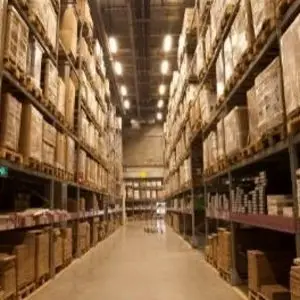LEDs are durable and can withstand high temperatures, making them ideal for warehouse environments. They also emit very little heat, so they won’t add to the already hot temperatures in a warehouse. And because they’re so energy-efficient, they can help to lower your electric bills. So if you’re thinking about upgrading your warehouse lighting, consider switching to LEDs. They may just be the best light for the job!
What are LED lights?
LED stands for light-emitting diode. A diode is an electrical device that only allows current to flow in one direction. Diodes are made of a material that emits light when an electric current flows through it. LEDs are different from other types of lighting, such as incandescent and fluorescent, because they don’t use filters or glass bulbs to produce light. Instead, they use tiny semiconductor chips that emit light when an electric current is applied to them.
How do LED lights work?
LED lights work by using a process called electroluminescence. This is a process where electricity is used to create light. When electricity is applied to an LED, it causes the semiconductor material inside the LED to emit photons, which are particles of light.
What are the benefits of LED lights?
LED lights have several benefits over other types of lighting, including:
- They’re more energy-efficient: LED lights use less electricity than other types of lighting, such as incandescent and fluorescent lights. This means they can help save money on your energy bill.
- They last longer: LED lights have a longer lifespan than other types of lighting. This means you won’t need to replace them as often, which can also help save money.
- They’re more environmentally friendly: because they’re more energy-efficient and last longer, LED lights can help reduce your carbon footprint
The disadvantages of LED lights
Although there are several advantages that come with using LED lights, there are also a few disadvantages, including:
- LED lights are more expensive than traditional lighting options.
- LED lights can produce a jarring, bright light that can be harsh on the eyes.
- LED lights can flicker more than traditional lightbulbs.
How much do LED lights cost?
The price of LED lights has come down significantly in recent years, making them a more affordable option for warehouse lighting. LEDs typically cost 30-50% more than traditional lighting fixtures, but they last much longer and use less energy, so they can actually save you money in the long run.
How long do LED lights last?
An important advantage of LEDs is their extremely long operational life. In general, an LED bulb can last up to 50,000 hours. This is around 50 times longer than a traditional incandescent, 20-25 times longer than a compact fluorescent, and 8-10 times longer than a halogen bulb.
Even though LED bulbs have a significantly longer lifespan than other types of lighting, it’s important to keep in mind that their light output will decrease over time.
Are LED lights energy efficient?
Yes. One of the main reasons to switch to LED is that they are much more energy efficient than traditional incandescent or fluorescent warehouse lights. LEDs use only a fraction of the power of incandescents—in some cases, as little as 10% of the power.
And because they use less electricity than incandescent bulbs, they can help to lower your energy bills. In fact, LEDs are so energy efficient that they can last up to 50,000 hours — that’s 50 times longer than an incandescent bulb! Another advantage of LED lights is that they produce very little heat. This makes them safer to use and touch than incandescent bulbs, which can get very hot.
What are the applications of LED lights?
The main applications of LED lights are in the field of general lighting, automotive lighting, and mobile phone backlighting. Among these applications, general lighting is the largest market for LED lights.
What are the benefits of using LED lights in warehouses?
There are many benefits to using LED lights in warehouses, including:
- LEDs are more energy efficient than traditional lighting options, which can help to reduce your overall energy costs.
- LEDs emit less heat than traditional light bulbs, which can help to reduce your cooling costs in the summer months.
- LEDs have a longer lifespan than traditional light bulbs, so you won’t need to replace them as often.
- LEDs provide better lighting quality than traditional light bulbs, which can help improve worker productivity and safety.
What are the disadvantages of using LED lights in warehouses?
Although there are many advantages to using LED lights in warehouses, there are also a few disadvantages. One disadvantage is that LED lights can be more expensive than traditional lighting options. However, the long-term savings and energy efficiency of LED lights can offset the initial cost.
Additionally, some LEDs may flicker or produce a humming noise, which can be disruptive for workers. Finally, LED lights produce a bright light that can be jarring in large spaces, so it’s important to consider the right level of light output for your warehouse space.
In Closing
Because LEDs don’t produce heat, they can help to keep your warehouse cooler in the summer. Finally, LED lights are available in a variety of shapes and sizes. This means that you can find LED lights to fit just about any need or space — from small flashlights to large warehouse spaces.
NEXT UP: Are LED Lights Good For Auto Shops?

